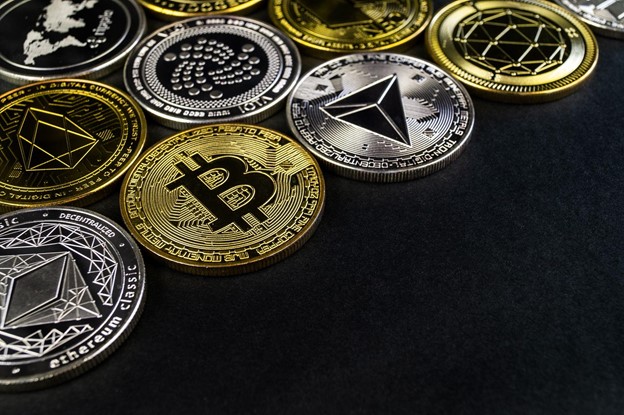Table of Contents
Trading cryptocurrencies is analogous to trading forex or foreign exchange markets (FX). Foreign exchange and cryptocurrency markets are comparable in many respects; they are open 24 hours a day, allow for the use of derivatives such as options, and allow for speculation on various currency pairings.
However, one significant distinction between the crypto and forex markets is that the conventional forex market exclusively trades in fiat money. This implies that players are limited to exchanging one fiat currency for another.
Also Read:
Meanwhile, the customer has two distinct options on the cryptocurrency market. The first is to exchange fiat cash, such as the United States dollar, for a cryptocurrency such as Bitcoin. The second option is to conduct direct exchanges between cryptocurrencies. A possible example of this is exchanging Ether for Bitcoin.
Unless you’re already experienced with cryptocurrency mining, the likelihood is that you’ll begin by purchasing cryptocurrencies with fiat cash. However, another critical aspect is that most fiat-to-crypto trading occurs on regulated currency exchanges, making it simpler for newcomers to understand.
Ways to Trade Cryptocurrency in 2022
In 2021, you may trade cryptocurrency using a variety of techniques. There are basic techniques as well as more advanced ones. Nonetheless, we’ll go through some of the most prevalent strategies to trade cryptocurrency:
Spot Cryptocurrency Trading
Spot trading is perhaps the easiest way to get started if you’re new to the world of cryptocurrencies. This is because bitcoin spot trading is not based on a derivative. This finally implies that the traders here do not employ leverage, which simplifies the deals.
You may also withdraw your investment by purchasing crypto on a spot market. This is advantageous for high-frequency traders and investors who want to store assets for an extended length of time.
However, it is important to remember that spot exchanges often charge more costs and may have less liquidity. The following are some of the largest cryptocurrency exchanges in 2021:
Cryptocurrency exchanges include Coinbase, Binance, and Kraken.
If you’re interested in learning more about cryptocurrency exchanges such as Coinbase or Binance, be sure to check out our in-depth Coinbase vs. Binance comparison post.
Cryptocurrency Futures
Crypto futures are another method to trade cryptocurrency. A futures contract is essentially a derivative contract that binds a buyer and seller to exchange an asset, such as a cryptocurrency, at a certain future date and price.
Futures in cryptocurrency operate similarly to futures in the stock market in that purchasers may speculate on the long and short sides of a currency. Crypto futures exhibit many features, including minimal costs and great liquidity compared to the rest of the market. On the Ivan on Tech Academy blog, we previously discussed Bitcoin futures.
However, there are two sorts of futures in the realm of cryptocurrency. The first is standard futures, for which an expiration date is specified. The second kind is called perpetual futures, and as the name implies, this sort of future has no expiration date. Perpetual futures are unique to the cryptocurrency market, accounting for the overwhelming majority of futures.
Futures may be traded on exchanges such as Bybit, FTX and BitMEX.
Cryptocurrency Alternatives
The last option that we will discuss in this essay is crypto options. In conventional finance, an option contract gives an investor the right to acquire a share at a certain price at any point throughout the term of the contract.
This is a sophisticated method that traders may use to prevent certain disadvantages while still benefiting from the upsides. However, the intricacy makes this crypto option difficult to grasp, making it unsuitable for beginner traders new to the crypto industry.
The following exchanges allow for the trading of crypto options:
Deribit\sLedgerX\sFTX
The Risks of Crypto Trading in 2021
From the Hero to the Zero
Cryptocurrencies are subject to the risk of becoming worthless, which is one of the biggest hazards. Although this is a very unusual occurrence, it has happened and may occur in the future. Bitconnect Coin, SALT, and Medicalchain are a few examples. Nonetheless, it’s worth noting that well-known cryptocurrencies like Bitcoin and Ethereum are exceedingly unlikely ever to do so.
Two possible causes for a coin to become outmoded and lose its value. One is that it is constructed on outdated technology or that the currency has little acceptance. Just like a stock on the conventional market, a coin’s value might depreciate to the point of becoming worthless. However, this is unlikely to occur overnight, which means that you can prevent this issue with the proper abilities.
A cryptocurrency’s price may fall due to an exit fraud perpetrated by its developers. Because unknown persons often create these currencies, there is a substantial possibility of an exit scam. The risk arises when the founders amass many coins then abruptly dump them, causing the currency’s value to plummet.
Hacks
Even if the concept of blockchain technology is secure and impervious to hacking, particular systems may have additional vulnerabilities. Due to the highly technical nature of the domain, many individuals are unaware of how the tools they use truly operate. Additionally, dealing in these virtual currencies allows for perfect anonymity. This anonymity increases the likelihood of getting away with fraud or theft.
Scams involving Exchange Exit
The next danger that we will examine more closely is exchanged exit frauds. If you select a less well-known exchange or trading location, they may turn their backs on their users. Like COSS and MapleChange, several past exchanges have abruptly ceased operations, leaving their customers with no cash.

